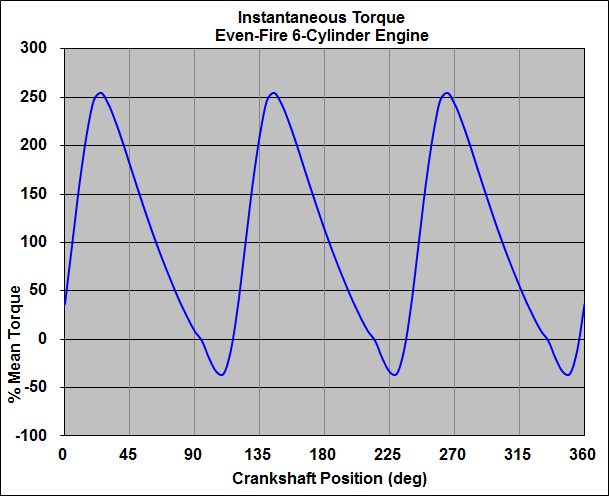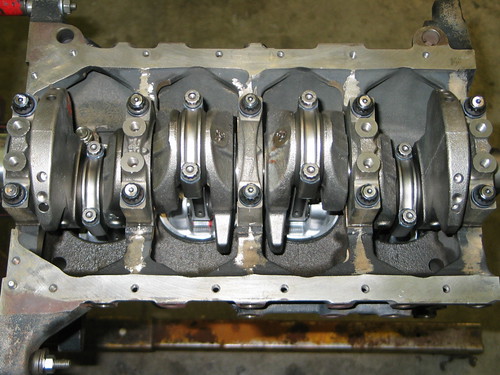NA8 motor build with Protege crank review
#1
I'm looking to build an 1.8L NA8 for endurance circuit racing this year, and I want to use the Protege light crank, with the couple of missing counter weights. I was informed of it's existence in these forums, but it seems only 2 members have run an engine with it. And as a side note, I see the modern Mazda cranks using a reduced counterweight design also.
There are some theoretical limitations that come along with this light Protege crank per forum discussions, so I wanted to get a review by forum members regarding using this crank in a motor build with the supporting parts.
Would a VVT 1.8L head and cams(with a standalone controller) be mostly a waste on top of this setup? since the theoretical limitation of the crank is rpm, and the VVT head has it's biggest benefit at the upper rpm band?
Which head would be best to bolt onto the shortblock with the Protege light crank?
Which mildly ported head(focusing on mid-range improvement) would be best for this shortblock?
There is also a theoretical increase in crank flex, so it would follow that the oil pump could be in additional jeopardy.
Which oil pump and damper would mitigate the potential that comes with the theoretical increase in crank flex that could destroy the oil pump?
Looking to get reviews on these things, to have reasonable basis for parts selection, before I become person #3 with a Protege crank build.
Wingnut
There are some theoretical limitations that come along with this light Protege crank per forum discussions, so I wanted to get a review by forum members regarding using this crank in a motor build with the supporting parts.
Would a VVT 1.8L head and cams(with a standalone controller) be mostly a waste on top of this setup? since the theoretical limitation of the crank is rpm, and the VVT head has it's biggest benefit at the upper rpm band?
Which head would be best to bolt onto the shortblock with the Protege light crank?
Which mildly ported head(focusing on mid-range improvement) would be best for this shortblock?
There is also a theoretical increase in crank flex, so it would follow that the oil pump could be in additional jeopardy.
Which oil pump and damper would mitigate the potential that comes with the theoretical increase in crank flex that could destroy the oil pump?
Looking to get reviews on these things, to have reasonable basis for parts selection, before I become person #3 with a Protege crank build.
Wingnut
#2
I'm not one of those with the Protege crank but I've spent several decades working with engine development groups at the 3 US manufacturers. My $0.2 is for an endurance engine, high RPM for long periods of time especially where you'll probably raise the limiter using the cast steel crank would be adding a weak point into the equation.
There's a reason they do what they do when they could use a much cheaper design.
There's a reason they do what they do when they could use a much cheaper design.
#3
Moderator


iTrader: (12)
Join Date: Nov 2008
Location: Tampa, Florida
Posts: 20,664
Total Cats: 3,013
Removing rotating Mass from the crankshaft would certainly decrease the power absorption and storage effect the weights impart. I can see that making the power pulses and speed reductions between pulses more pronounced.
#6
Cpt. Slow

iTrader: (25)
Join Date: Oct 2005
Location: Oregon City, OR
Posts: 14,210
Total Cats: 1,139
I have no experience with this, but just read some stuff about the crank written by Emilio, might help, but kinda goes against empirical data from Stealth97...
https://www.miataturbo.net/engine-pe...g-ideas-83443/
https://www.miataturbo.net/engine-pe...g-ideas-83443/
#7
As far as I know, the later BP engine that came in front wheel drive Mazdas from 1994 till 1998 with the lighter crank have lower power (114 hp) compared to the older 1988-1994 BPs (130 hp). I also think they redline at a lower RPM.
Also Nissan did the same with the QR25 engine: they changed to a fully counterweighted crank when they increased the redline. See also here: https://motoiq.com/extreme-engine-te...ouse-part-1/2/
#8
Moderator


iTrader: (12)
Join Date: Nov 2008
Location: Tampa, Florida
Posts: 20,664
Total Cats: 3,013
Expect faster revving but increased likelihood of oil pump damage and transmission damage just as with a very light flywheel. Power pulses are evened out by the crank and flywheel rotating mass.
Engines don't spin smoothly. They are constantly speeding up and slowing down during every revolution. When charted it looks like waves. Lighter rotating mass doesn't mean more power but it does make the speeding and slowing peaks and valleys much more pronounced. Heavier rotating engine mass yields a smoother delivery. The power stored from each power pulse is better retained between the pulses.
The horsepower output will be the same. The lighter mass will free rev quicker. Just as with a light flywheel it may stall more easily but shift more quickly. Pluses and minuses abound.

Engines don't spin smoothly. They are constantly speeding up and slowing down during every revolution. When charted it looks like waves. Lighter rotating mass doesn't mean more power but it does make the speeding and slowing peaks and valleys much more pronounced. Heavier rotating engine mass yields a smoother delivery. The power stored from each power pulse is better retained between the pulses.
The horsepower output will be the same. The lighter mass will free rev quicker. Just as with a light flywheel it may stall more easily but shift more quickly. Pluses and minuses abound.

#9
Not sure if serious or trolling...
As far as I know, the later BP engine that came in front wheel drive Mazdas from 1994 till 1998 with the lighter crank have lower power (114 hp) compared to the older 1988-1994 BPs (130 hp). I also think they redline at a lower RPM.
Also Nissan did the same with the QR25 engine: they changed to a fully counterweighted crank when they increased the redline. See also here: https://motoiq.com/extreme-engine-te...ouse-part-1/2/
As far as I know, the later BP engine that came in front wheel drive Mazdas from 1994 till 1998 with the lighter crank have lower power (114 hp) compared to the older 1988-1994 BPs (130 hp). I also think they redline at a lower RPM.
Also Nissan did the same with the QR25 engine: they changed to a fully counterweighted crank when they increased the redline. See also here: https://motoiq.com/extreme-engine-te...ouse-part-1/2/
I have yet to see anyone actually break a cast BP crank. Just lots of internetting about how it's guaranteed to fail the first time you make more than 130hp. In the meantime, the Protege guys have been boosting them for a decade or two.
#10
I think the fully counterweighted crank will put less load on the main bearings/caps at higher revs, but unfortunately I do not have the knowledge to show the actual numbers.
#11
Think of it this way: the BP crank has done 800hp. You think engineers had that in mind?
I'd be pretty comfy with the crank spec'd for the motor that made a whopping 15hp less making wayyyyy less than 800hp. We're talking about a pretty terrible motor in either case anyways. OEM's requirements for safety windows and use are a bit different than ours. The redline thing for the cast crank motors is largely because of the different head they used. (at least in the early ones where the cast crank started. It was SOHC and didn't flow worth a damn, so there was no point in spinning it.)
In the rest of the Mazda world, for example..... the KL guys seek out the cast cranks for their N/A builds because they weigh less. No reports of negative ramifications.
IMO the worst part about the SOHC crank is that it seems to be really hard to find. I've been looking for one for a long time.
I'd be pretty comfy with the crank spec'd for the motor that made a whopping 15hp less making wayyyyy less than 800hp. We're talking about a pretty terrible motor in either case anyways. OEM's requirements for safety windows and use are a bit different than ours. The redline thing for the cast crank motors is largely because of the different head they used. (at least in the early ones where the cast crank started. It was SOHC and didn't flow worth a damn, so there was no point in spinning it.)
In the rest of the Mazda world, for example..... the KL guys seek out the cast cranks for their N/A builds because they weigh less. No reports of negative ramifications.
IMO the worst part about the SOHC crank is that it seems to be really hard to find. I've been looking for one for a long time.
#12
Not sure if serious or trolling...
As far as I know, the later BP engine that came in front wheel drive Mazdas from 1994 till 1998 with the lighter crank have lower power (114 hp) compared to the older 1988-1994 BPs (130 hp). I also think they redline at a lower RPM.
Also Nissan did the same with the QR25 engine: they changed to a fully counterweighted crank when they increased the redline. See also here: https://motoiq.com/extreme-engine-te...ouse-part-1/2/
As far as I know, the later BP engine that came in front wheel drive Mazdas from 1994 till 1998 with the lighter crank have lower power (114 hp) compared to the older 1988-1994 BPs (130 hp). I also think they redline at a lower RPM.
Also Nissan did the same with the QR25 engine: they changed to a fully counterweighted crank when they increased the redline. See also here: https://motoiq.com/extreme-engine-te...ouse-part-1/2/

The key to longevity? Know your platform, select parts carefully to meet your goals, and hire a engine builder who knows what he's doing...
Thread
Thread Starter
Forum
Replies
Last Post
Wingnut
Engine Performance
6
07-06-2018 08:26 PM










